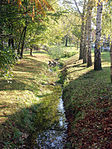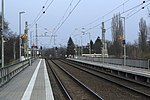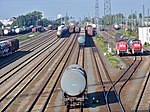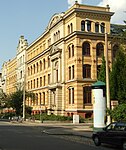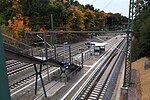HASAG

HASAG (also known as Hugo Schneider AG, or by its original name in German: Hugo Schneider Aktiengesellschaft Metallwarenfabrik) was a German metal goods manufacturer founded in 1863. Based in Leipzig, it grew from a small business making lamps and other small metal products by hand into a large factory and publicly traded company that sold its wares in several countries. During the Second World War, Hasag became a Nazi arms-manufacturing conglomerate with dozens of factories across German-occupied Europe using slave labour on a massive scale. Tens of thousands of Jews from Poland, and other prisoners, died producing munition for Hasag.It began making armaments during the First World War, a decision that ultimately increased the company's profitability. The loss of military business after the war resulted in dropping sales. HASAG struggled during the 1920s in the Weimar Republic. As the Nazi Party grew in influence and eventually came to power in 1933, growing militarism led to the company's return to small arms production under the new SS leadership. Following the invasion of Poland at the onset of World War II the company expanded to accommodate thousands of NS-Zwangsarbeiters from concentration camps and ghettos. It was the third largest user of forced labor in Europe, with armaments factories in Germany and Poland. Though HASAG was dismantled after the war, the trademark remained in use until 1974.
Excerpt from the Wikipedia article HASAG (License: CC BY-SA 3.0, Authors, Images).HASAG
Permoserstraße, Leipzig Sellerhausen-Stünz (Ost)
Geographical coordinates (GPS) Address Nearby Places Show on map
Geographical coordinates (GPS)
| Latitude | Longitude |
|---|---|
| N 51.352635 ° | E 12.433047 ° |
Address
17.0 Leibniz-Institut IOM (Oberflächenmodifizierung e.V.)
Permoserstraße
04318 Leipzig, Sellerhausen-Stünz (Ost)
Saxony, Germany
Open on Google Maps

